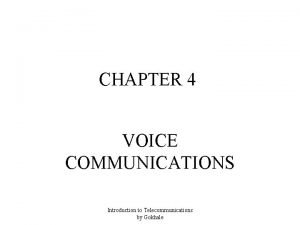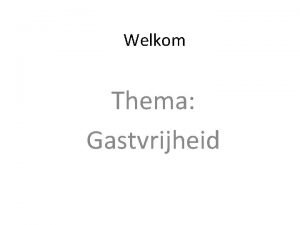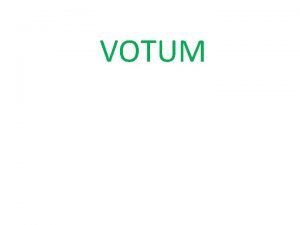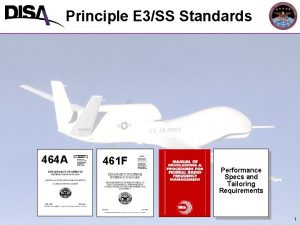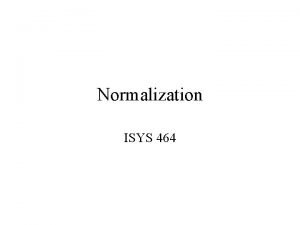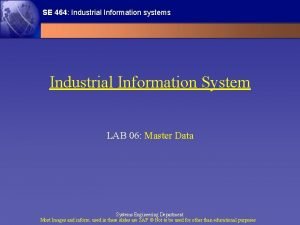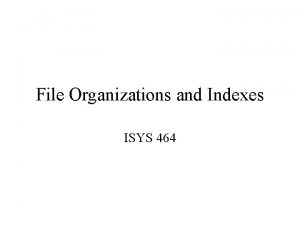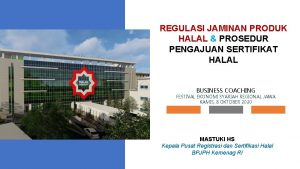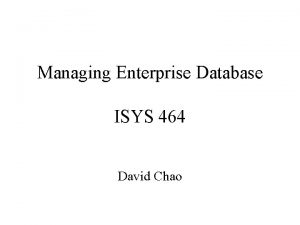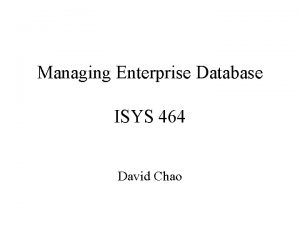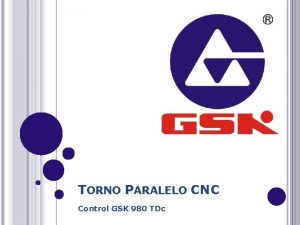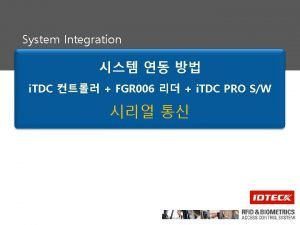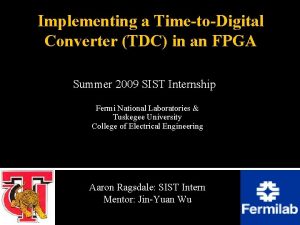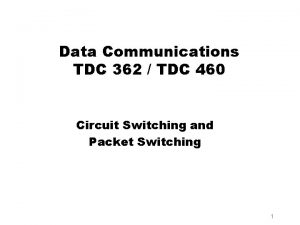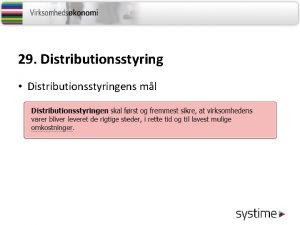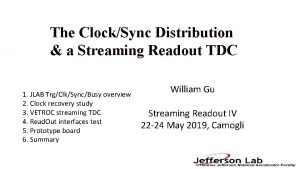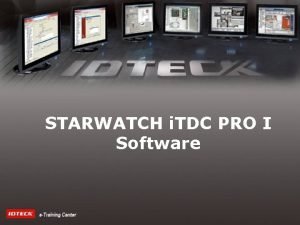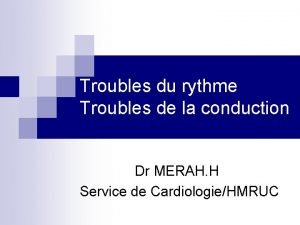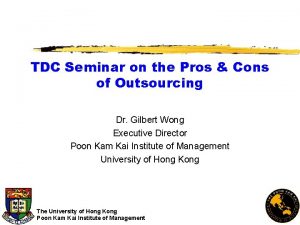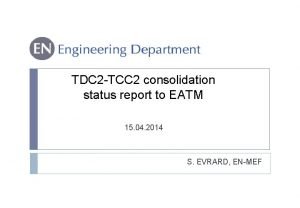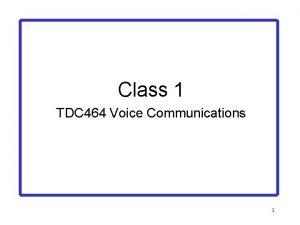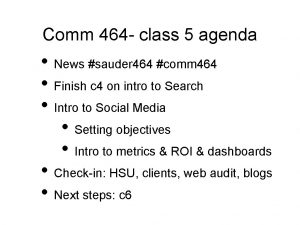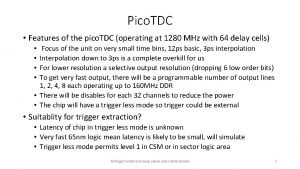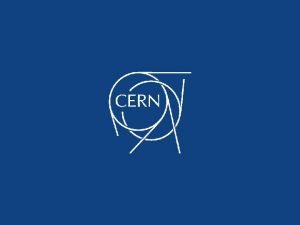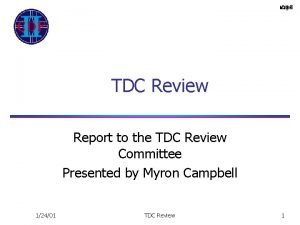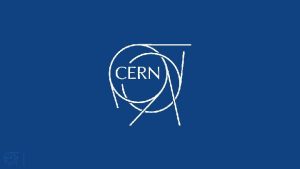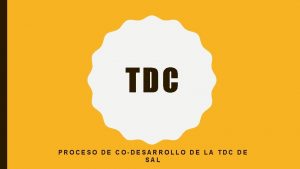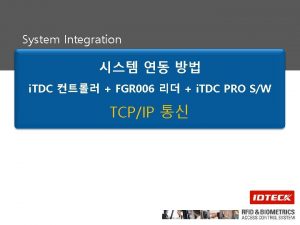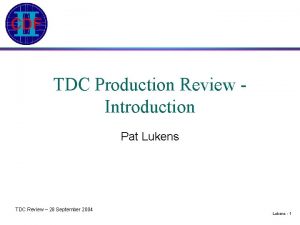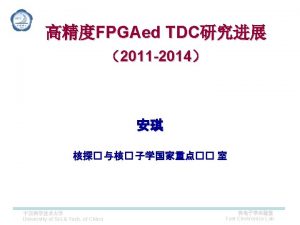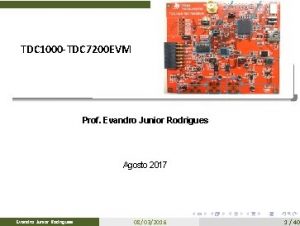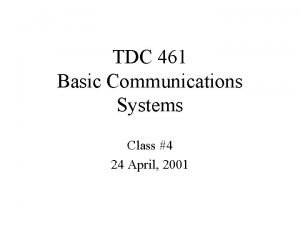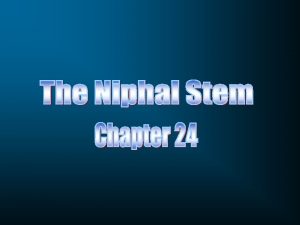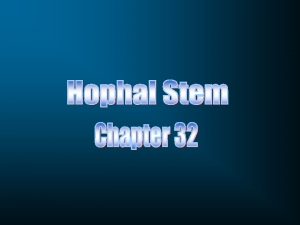Class 1 TDC 464 Voice Communications 1 Class






























- Slides: 30

Class 1 TDC 464 Voice Communications 1

Class 1 Outline • • • Overview of PSTN Components Pre-Divestiture PSTN Post-Divestiture PSTN the NANP Telecommunication Act of 1996 Signals in the time domain Signals in the frequency domain Signal Bandwidth Filters and Channel Bandwidth the decibel (d. B) 2

The Public Switch Telephone Network (PSTN) Composed of the following major network elements: · switches · trunks · lines · station equipment (e. g. telephone sets, MODEMs, FAX machines, …) · transmission equipment (e. g. repeaters, multiplexers, DCS) · network signaling and control (e. g. SS 7 and IN) SS 7 & IN switch PBX repeater switch MODEM PC 3

Mesh vs Hierarchical Mesh Network: · All switching offices at same level (e. g. Ethernet LAN) · Each office exchange directly connected via a dedicated trunk group to all others Þ # of trunk groups = N(N-1)/2 N 2 where N = # of COs Hierarchical Network: · each switching office “homed” in to a higher level office · all routes are switched at the highest office · fewer number of trunk groups, larger number of offices compared to Mesh Networks 4

Pre-Divestiture PSTN Class 1 Regional Office Class 2 Sectional Office Class 3 Primary Class 4 Toll Office Class 5 Central Office General Characteristics: · Bell System implemented a hierarchical switching network, augmented with high capacity trunks (mesh network), to implement Direct Distance Dialing (DDD) in 1960’s. · five levels of switching (class 5 CO to Class 1 Primary) · traffic always routed through the lowest available level (1 st choice route) · alternate routes utilized when 1 st route encounters blocking · Independent phone companies (aka Independents) provided local phone service. In 1981, 23. 5 k non. Bell vs 20. 8 k Bell Class 5 s. 5

Bloomingdale Telephone Company, Inc. is a Michigan corporation established in 1955 for the purpose of providing telecommunications services and has been evolving ever since. Operating as a privately held stock corporation, it provides along with its subsidiary Bloomingdale Communications, Inc. a wide range of services throughout the southwest Michigan area. Each year the stockholders hold their annual meeting for the purpose of selecting the Board of Directors and conducting other business functions of the corporation. What makes our organization unique is the fact that our stockholders, directors, employees and customers all work toward our common goal of service to our subscribers. In 1904, with very few customers, the Bloomingdale Telephone Company had its modest beginning. Today, it's a larger operation -- but still miniscule when compared to others. You can see just how much we've grown by seeing our Company History page. This independent company serves approximately 2, 300 households and businesses in the village of Bloomingdale and parts of three Van Buren and Allegan county townships with service superior in quality to that supplied by many of the major telephone companies. There is, however, one difference between us and the major telephone companies, and we take pride in that difference. Bloomingdale Telephone Company has a presence in West Michigan that ensures our customers will have quality, friendly, service. Our offices are here and so are we, so you'll never be greeted by a recording when you call us. At Bloomingdale Telephone Company, we have the technology and staff to provide our customers with the service quality they have come to expect and deserve. Installed in May of 1995 was our Northern Telecom DMS-10 Rural and Global Switching System. This advanced equipment enables us to provide our customers with many of the custom calling features not available in the surrounding communities.

Post-Divestiture PSTN to 1996 IXC network POP IXC Trunk POP LATA Tandem End Office End Inter-Office Trunk LATA #1 • • Subscriber Lines End Office PBX Trunk PBX LATA #2 • IEC’s (Inter-Exchange Carriers) (or IXC’s): long distance service providers LEC’s (Local Exchange Carriers): local phone service provider. 100% of class 5 offices (End Office), 20% of class 4 offices (LATA Tandem) given to LECs. LEC’s must use IXC’s to transport traffic across a LATA (Local Access Transport Area) boundary (LECs prohibited from offering long distance service) LATAs divided into several Local Calling Areas (LCA)s. Intra LCA calls are • • local, calls. IXC’s are” local calls at Point of Presence (POP) LEC’sinter must. LCA provide equaltoll” access IXC’s switching networks has tended to “flatten” over time (less hierarchical) • 7

US LATA Map 8

Equal Access to IXCs • Equal Access to IXCs was mandated by the MFJ to promote long distance competition • Different levels of “Equal Access” provided based on switching technology’s ability to support Automatic Number Identification (ANI) for billing and database queries – Feature Group A provides line access • 1 + 800 + seven digital number + PIN + area code + seven digit number • initially required for all IXC’s except AT&T (used 1 + dialing) – Feature Group B provides trunk access • PIC + 1 + area code + seven digital number • all IXCs assigned PIC codes • reduced total number of digits required to dial – Feature Group D provides trunk access • 1 + dialing (using prefered IXC) • Feature B support to override preferred IXC • used in the vast majority of POPs today 9

Telecommunication Act of 1996 • Act Summary: “To provide a pro-competitive, de-regulatory national policy framework designed to accelerate private sector development of advanced telecommunications and information technologies and services to all Americans” • the Act ruled to: Þ Þ Þ Þ remove entry barriers to allow local phone competition CLECs (Competitive LEC) vs ILECs (Incumbent LEC) allow LEC’s to provide long distance service (in their region) after “opening up” their region to competition checklist defined as criteria for “opening up” region to competition allow LEC’s to manufacture telephone equipment deregulated Cable Television service (removed 1992 Cable Act regulations) universal service ? ? 10

In-Region Competitive Checklist Under the Act an RBOC can offer in-region inter. LATA service within 90 days after FCC application demonstrating the following (1) non-discriminatory interconnection; (2) unbundled network elements; (3) open access to RBOC poles, ducts, conduits and ROWs (4) unbundled local loops; (5) unbundled trunk side transport; (6) unbundled local switching; (7) nondiscriminatory access to 9 -1 -1, directory assistance data bases; (8) white pages listings for competitors' subscribers; (9) nondiscriminatory number assignment; (10) nondiscriminatory access to network databases; (11) interim number portability; (12) 1+ dialing parity; (13) reciprocal compensation (which may include "bill and keep") (14) resalable network functions (excluding universal services). An RBOC must demonstrate that it has entered an interconnection agreement with an actual competitor offering service "predominantly over its own telephone exchange service facilities, " The following companies do not qualify as actual competitors in this 11 context: CAPs, LEC resellers, and cellular.

CLECS and CAPS in Chicagoland 12

Today’s Service Providers 13

North American Numbering Plan · · defines format for dialed numbers in US, Canada, Caribbean As of 1/95 prefix + 0/1 + NXX - XXXX Station number Exchange code (CO Prefix ID) 411, 911, 555 reserved Area code (geographic region) Operator assistance (0=collect, calling card) Primary IXC Carrier (PIC) code (N digits are 2 -9, X digits are 0 -9) 101 -XXXX (as of 7/98) · example: which of the following phone numbers are valid 1 -188 -346 -9999 1 -609 -811 -6673 1 -404 -168 -5555 1 -999 -9999 1 -419 -111 -7776 101672312292110000 · international calls are initiated by dialing 011, followed by country and city code (if any) phone number shortage crisis – Why? · 14

Signals in the Time Domain - concepts & definitions continuous signal: intensity varies in a “smooth fashion overtime” discrete signal: signal strength can change by only a fixed amount analog signal: a continuous set of signal strengths digital signal: a discrete signal (generally assume to consists of only two levels periodic signal: s(t + T) = s(t) for all t 15

Signals in the Time Domain the sine wave signal: s(t) = A sin (2 ft+ ) frequency = f (Hz) period = T = 1/f peak-to-peak amplitude = 2 x A 0 -to-peak amplitude = A 16

Signals in the Time Domain the square wave signal: s(t) = A for t <T+ -A for t >T+ Amplitude A Time (T) 0 T -A frequency = f (Hz) = 1/T duty cycle = /T peak-to-peak amplitude = 2 x A 0 -to-peak amplitude = A 17

Signals in the Frequency Domain - concepts & definitions Critical Concept: It can be shown that any signal is composed of a summation of sinusoids of differing frequencies and amplitudes! – The translation of a time domain signal, s(t), to a frequency domain signal, S(f), can be done using the following: periodic signals: non-periodic signals: => Fourier Series => Fourier Transform example: square wave, s(t) = A 0 + A/n sin (2 nft), n=1, 3, 5, 7, … 18

Spectrum Plot of Square Wave Spectrum Plot for the Square Wave: s(t) = A 0 + A/n sin (2 nft), n=1, 3, 5, 7, … dc offset A Amplitude A 0 harmonics fundamental A/3 A/5 A/7 A/9 . . . 0 • • • f 2 f 3 f 4 f 5 f 6 f 7 f 8 f Frequency (Hz) 9 f The dc offset (A 0) is the dc bias level of the waveform The fundamental is f = 1/T (n=1) the harmonics are integer multiples of the fundamental (n x f; n=2, 3, 4, …) 19

Square Wave “Construction” 20

Square Wave “Construction” • Waveform takes the form of a square wave as harmonics are added • the dc offset adjusts the centering of the waveform 21

Signals in the Frequency Domain - key observations • periodic time varying signals are composed of a summation of discrete sinusoids (f 0 + f 1 + f 2 +… + fn, n = integer) • Non-periodic time varying signals are composed of a continuous range of harmonics (0 < f < ) • “Pure” digital signals are composed of an infinite number of harmonics • Most of the digital signal’s energy content resides in the fundamental and first several harmonics 22

Signal Bandwidth • Bandwidth (BW) is defined as a range of signal frequencies and has units of Hz – absolute BW: FMAX - FMIN – relative BW (or just BW): range of “important” frequencies – example: Real Life Signal Bandwidths 23

Signal Bandwidth vs Bit Rate • Students often (erroneously) interchange signal bit rate and bandwidth! • As stated earlier, bandwidth is the range of sinusoids that composes a signal. It has the unit of Hertz (Hz). Bit rate refers to information rate that is often expressed in terms of Bits per Second (bps) • • Information represented in analog signal form is usually expressed in Hz Information represented in digital signal form is usually expressed in bps Relationship between signal bandwidth and bit rate is based on the encoding/decoding scheme: – ex. local loop MODEM coding for PSTN 24

Shannon – Hartley Law The Shannon - Hartley Law relates the maximum theoretical channel capacity, C (in bps), as a function of channel bandwidth, B (in Hz). C = B x log 2 (1 + S/N) where S/N is the “Signal-to-Noise ratio” of the channel Question: What is the maximum data rate that can be achieved on a typical “dial-up connection” ? S/N = 45 d. B = 30, 000 for a “good” PSTN local loop C/B = 15 bps / Hz With B = 3000 Hz, C = 45 kbps 25

Filters • A filter modifies a signal by removing some frequency components: · Low Pass Filter (LPF[fcutoff]) n eliminates all frequency components above fcutoff n channel bandwidth? n examples? · High Pass Filter (HPF[fcutoff]) n eliminates all frequency components below fcutoff n channel bandwidth? n examples? · Band Pass Filter (BPF[f 1, f 2]) n eliminates all frequency components outside of band defined by f 1 and f 2 n channel bandwidth? n examples? 26

Filter Examples Square wave (A=1, dc offset =1) 2 1 0 1/2 1 1. 5 2 Time (T) BPF[250, 550] 0 100 300 500 Frequency (Hz) 700 900 0 100 300 500 700 900 Frequency (Hz) 27

Filter Example Square wave (A=1, dc offset =1) 2 1 0 1/2 1 1. 5 2 Time (T) LPF[350] 0 100 300 500 Frequency (Hz) 700 900 0 100 300 500 700 900 Frequency (Hz) 28

Why Do We Care About Filters? • • • every transmission media filters (usually low pass) the signal that is sent through it. the PSTN BPF [300 Hz, 3300 Hz] voice and data signals transmitted through it media examples 29

The decibel (d. B) the decibel (d. B): a logarithmic unit that expresses the relative relationship (e. g. ratio) between two powers (or voltages) d. B = 10 log 10[POUT/ PIN] d. B = 10 log 10[VOUT 2/ VIN 2] for power for voltage the decibel m. W (d. Bm): d. Bm is used as an absolute power measurement for signals relative to 1 m. W d. Bm = 10 log 10[POUT], POUT is in m. W the decibel p. W (d. Brn): d. Brn is used as an absolute power measurement for signals relative to 1 p. W d. Brn = 10 log 10[POUT] = d. Bm + 90, POUT is in p. W 30
 113-com-1022 perform voice communications
113-com-1022 perform voice communications Perform voice communications 113-com-1022
Perform voice communications 113-com-1022 Perform voice communications
Perform voice communications Opwekking 352
Opwekking 352 Drinkgoed duitsland
Drinkgoed duitsland Mil-std-464
Mil-std-464 Erd normalization
Erd normalization Kin 464
Kin 464 Se 464
Se 464 Isys 464
Isys 464 Kma 464 tahun 2020
Kma 464 tahun 2020 Exam 70-464 training kit
Exam 70-464 training kit B logic isys
B logic isys Isys 464
Isys 464 Kin 464
Kin 464 Digital systems engineering
Digital systems engineering Gsk cnc 980 tdc
Gsk cnc 980 tdc Tdc mdcps
Tdc mdcps Tdc systems integration
Tdc systems integration Tdc significato pedagogico
Tdc significato pedagogico Tdc fpga
Tdc fpga Honeywell tdc 2000
Honeywell tdc 2000 Tdc switch
Tdc switch Honeywell tdc 3000
Honeywell tdc 3000 Wilson formel
Wilson formel Lagerstruktur
Lagerstruktur Clocksync
Clocksync Tdc
Tdc Tdc cardiologie
Tdc cardiologie Tdc seminar
Tdc seminar Tdc 2
Tdc 2


